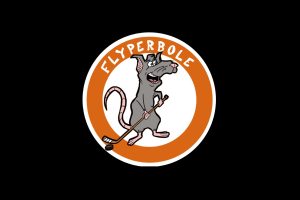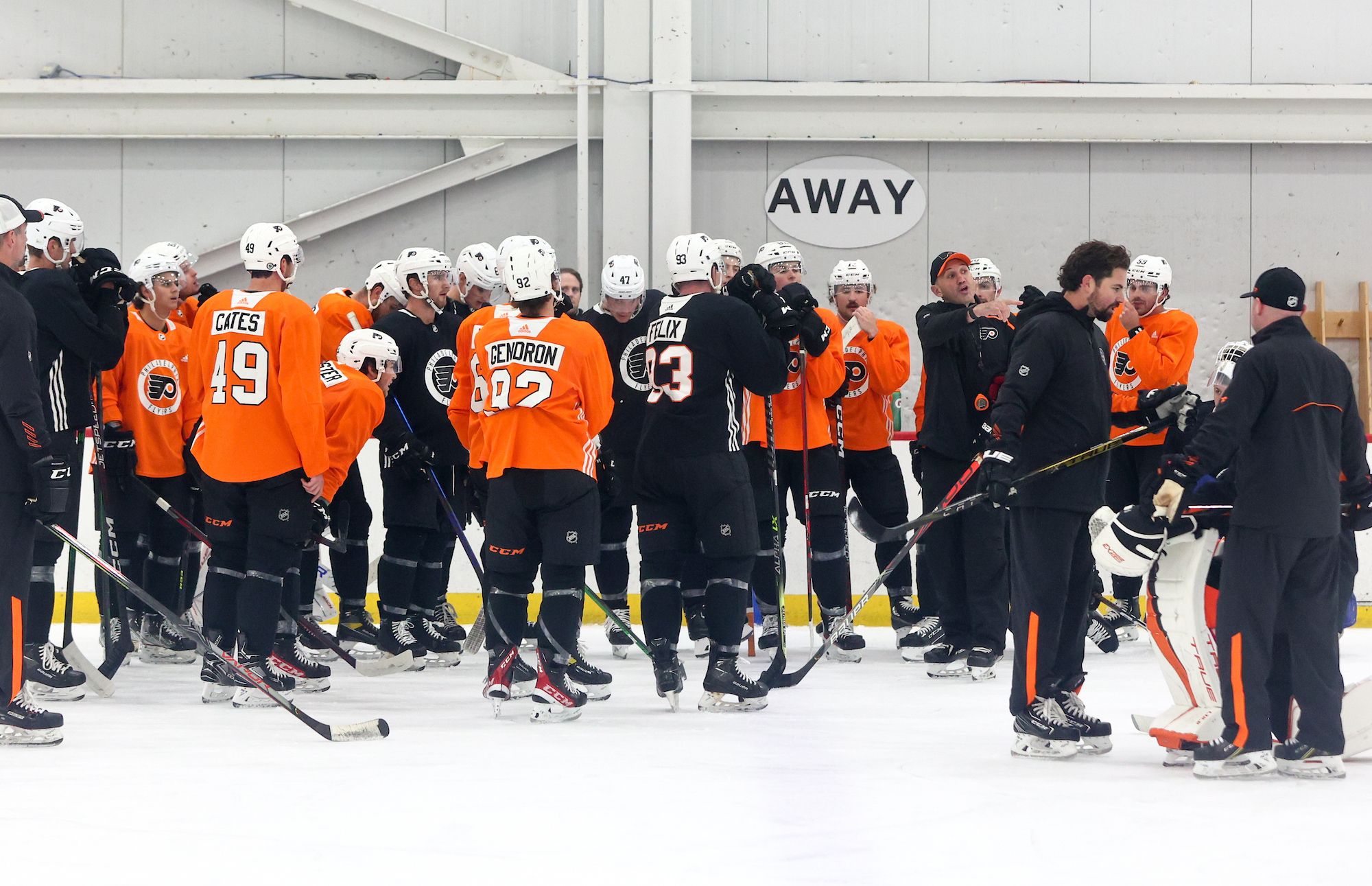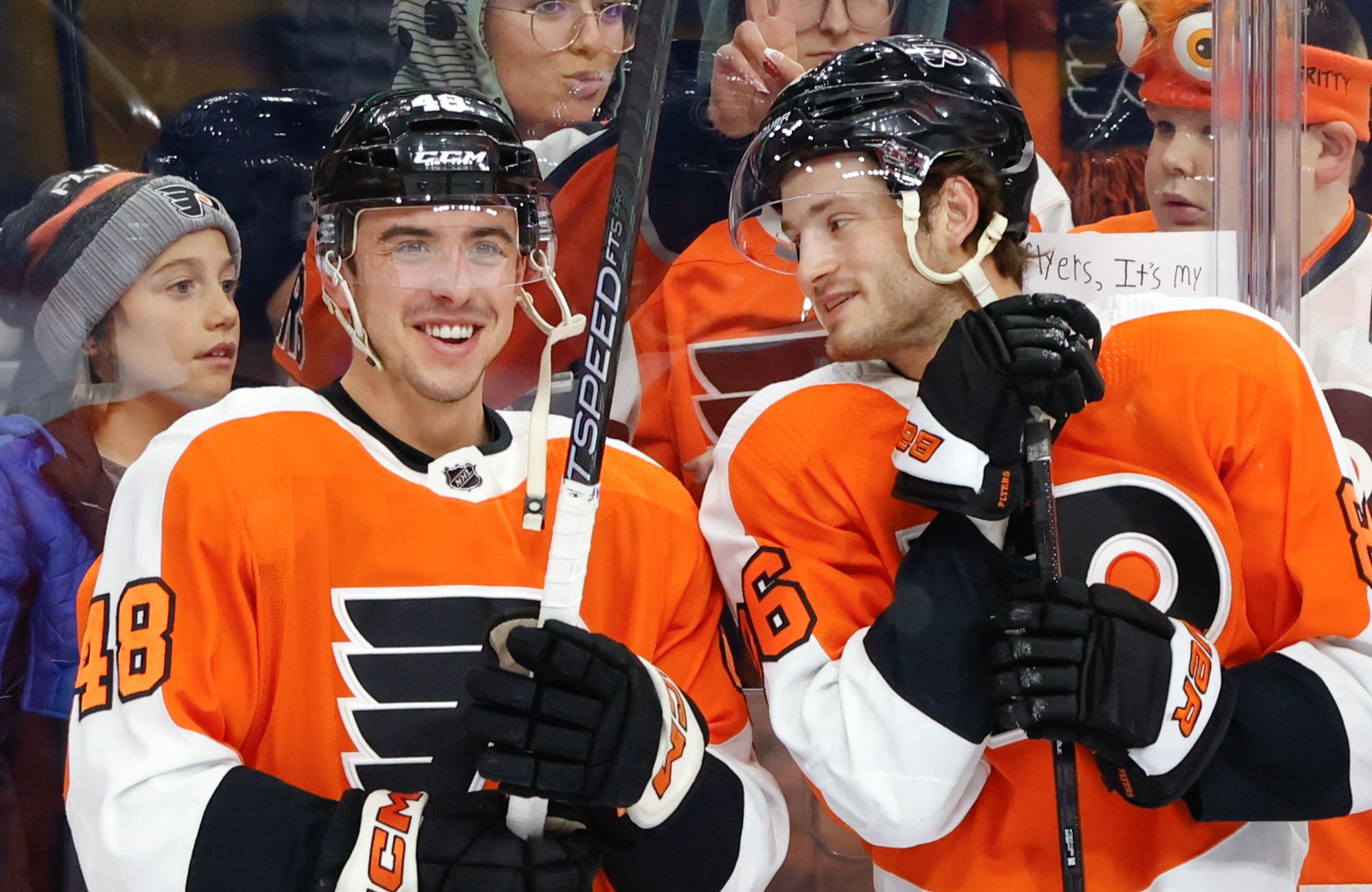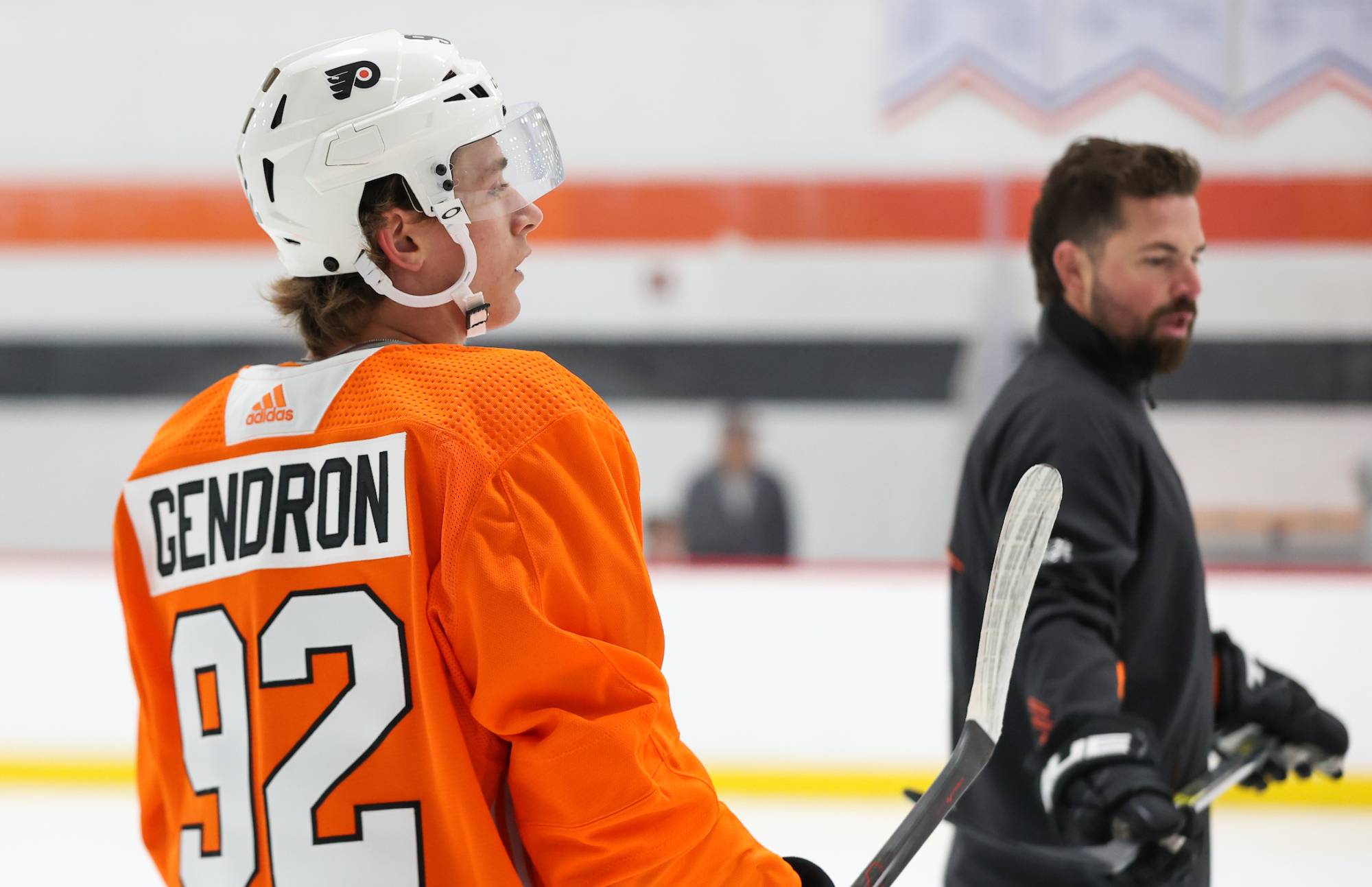Morning Observations is a feature where we break down the previous night’s game with an analytical eye.
#1: Are the Flyers now a one-line team?
My big concern after news broke that Matt Read would miss four weeks due an upper-body injury was that this might be one lost piece too many for the roster to survive. It’s not that Read is an essential piece by himself; it’s that combined with the previous loss of Sean Couturier, the Flyers now had lost key play-drivers on two separate lines.
Ever since Couturier left the lineup, the second line has no longer been able to carry play, but the team was overcoming that weakness due to improved results from the Read-Bellemare-Weise trio. Bellemare has been a poor play-driver his entire NHL career, but both Weise and Read have excelled in the neutral zone in Dave Hakstol’s system, and their combined efforts seemed to be overcoming Bellemare’s historical weakness. Then, they lost Read, leaving only Weise to carry the load. The hope was that he could somehow pull it off, or Brayden Schenn would step up on line two, or the fourth line could surprise and take the leap. Anything to take some of the pressure off the top trio.
At least last night, those hopes proved unrealistic. The top line (especially Giroux and Raffl) were basically fine — Giroux finished close-to-break-even in on-ice shot attempt differential (47.07% score-adjusted Corsi) and scoring chance differential (44.4% regular scoring chances, 50% high-danger) and Raffl was right behind. The other lines were a disaster. The three centers (Cousins, Schenn and Bellemare) finished with score-adjusted Corsis of 39.57%, 24.56% and 18.80% respectively, and of course it was Bellemare who saw his role expanded the most, receiving the most 5v5 minutes of any Flyers forward on the night. We can split hairs on which line was “better” but in the end, whenever the Giroux line left the ice, Philadelphia was totally on its heels. That’s a big problem, and one without an easy solution for the next month. Couturier and Read aren’t coming back for a while.
#2: Despite win, Flyers never had control of this one
Philadelphia found way to extend their winning streak to six games last night by topping the Florida Panthers by a 3-2 score. But aside from that final moment of euphoria when Jakub Voracek scored with seconds remaining in overtime, this never felt like a game that was going to end positively for the Flyers, even while they led. That’s because the Panthers controlled the pace of the contest from start to finish. By the end of 60 minutes, they had racked up some mammoth margins in terms of shot and chance generation.
At 5-on-5, the Panthers racked up 71 total shot attempts, and allowed the Flyers just 32 of them, good for a 68.83% score-adjusted Corsi for Florida. When removing blocked shots from the equation, the disparity was even greater, with the Panthers holding a 74.41% SA-Fenwick. Finally, Florida also dominated in scoring chances, leading 24-9 by regular chances at 5v5 and 12-4 in high-danger ones. The gaps tighten a bit when looking at all situations (since the Flyers had four power plays to the Panthers’ two) but Florida still held a gigantic edge. Philadelphia simply lagged behind in shot creation all game long.
A number of Flyers players noted after the game that while their first and third periods were poor, the second period was closer to what they wanted to achieve. That’s not totally wrong, but Florida still had the 5v5 edge in the middle stanza too — it just wasn’t as pronounced. Philadelphia posted a 41.18% score-adjusted Corsi in the second and won the high-danger battle 2-1, which was a stellar showing compared to the rest of the game but still not one that will succeed too often in the NHL. The truth is, this was Florida’s game to win, they just couldn’t seal the deal.
NHL.com Report & Highlights | Corsica.Hockey Game Recap Page | HockeyStats.ca Recap | NaturalStatTrick Recap | HockeyViz.com | BSH Recap | Meltzer’s Musings
#3: Mason the big reason for the win
So why couldn’t Florida seal the deal? The biggest reason by far was the play of Steve Mason, who continues to erase all memories of his poor start to the season with his recent run of brilliance. The save of the game came when he fell backwards to stop a Jussi Jokinen attempt at a wide-open net with his glove and came up with the puck, but there were at least ten other stops that could be on his season-long highlight reel.
After his 42 stop (on 44 shots) performance, Mason’s save percentage takes yet another leap, this time to 0.908, meaning that he’s gained almost 10 points over the past three games. Since the Black Friday loss to the Rangers, in fact, he’s posted an incredible 0.947 rate over his past five games, and is not only the primary reason why the Flyers won last night, but the single largest explanation for the team’s six-game winning streak. They don’t beat Boston last week without Mason, and they certainly don’t win this game without him, either.
#4: Simmonds is going to score a lot of goals this year
Second on the list of “How the Flyers somehow won this game” is Wayne Simmonds, whose two goals gave Philadelphia an advantage on the scoresheet that they would hold until the closing minutes of the third period. Last night also functioned as a perfect way to understand just how Simmonds is already up to 15 goals on the year. It’s a combination of natural ability and some very good luck.
Goal #2 was absolutely an example of the former. Planted in his usual spot in front of the net on the PP, Simmonds was able to execute a beautiful deflection of a Claude Giroux shot, flipping the puck over a surprised James Reimer. You can’t call that goal luck, because it only occurred as a result of Simmonds being the league’s best netfront PP presence. However, the Wayne Train’s first goal on the night was certainly not due to a unique skillset. Instead, it was a simple wrist shot from just inside the Florida blueline that somehow eluded Reimer. It may have been deflected slightly on the way, but there was more than enough time for the goalie to pick up the new trajectory.
It’s goals like that one that allow a true talent 30-goal scorer to have a “career-year.” You need some luck to go your way. Right now, Simmonds is holding a 21% shooting percentage, far above his 13.4% career rate. It won’t stay that high, but a few more good bounces combined with continued power play prowess doesn’t keep 17-18% out of the realm of possibility for Simmonds in a charmed season.
#5: Hakstol’s biggest blind spot is Bellemare
Dave Hakstol has earned his fair share of critics this season when it comes to his lineups and roster decisions. The most ire has been directed at his treatment of Andrew MacDonald and Chris VandeVelde — both players who the most vocal critics believe should not even be in the NHL, let alone the everyday lineup. One could argue that these two players constitute “blind spots” for Hakstol, but it’s not as if either has taken a role high in the lineup. MacDonald (this week aside) has generally been used as a third-pair defenseman, and VandeVelde is basically a PK specialist at this point. Both pale in comparison to the impact of a player with the statistics of a low-end fourth line forward who has consistently played in very important roles this year. That player, of course, is Pierre-Edouard Bellemare.
Despite rarely scoring at 5v5 (0.74 Points/60) and failing to drive play (-2.2% CF%RelTM) in his first two NHL seasons, Bellemare was handed the 3C job to start the year, and has basically never lost it despite continuing to A) rarely score and B) fail to drive play. Last night was really just the culmination of Hakstol’s total trust in Bellemare. The 30-year old led all forwards in 5v5 ice time with 16:43, and spent the entire final two periods playing shutdown center against Alex Barkov and Jaromir Jagr. The results, unsurprisingly, were disastrous. Bellemare finished with an 18.80% score-adjusted Corsi overall, and was at 19.36% in 11 minutes against Barkov. He also lost the scoring chance battle 8-1 against him.
In Hakstol’s defense, Brayden Schenn has been even worse at driving play this season than Bellemare, and Nick Cousins hasn’t exactly been ultra-impressive in recent weeks either (-3.45% Relative Corsi in his past seven games). But giving 17 minutes at 5v5 to Pierre-Edouard Bellemare and using him like you would Sean Couturier simply isn’t the answer here. I don’t even think people should be getting angry at Bellemare — it’s not his fault that he’s totally overmatched against competition like Barkov and Jagr. He’s just not as good as his coach seems to believe that he is.
#6: How do you solve the 5v5 lines issue?
I feel confident in stating that Pierre-Edouard Bellemare cannot function as the Flyers’ 2C for the rest of December until Sean Couturier can return, at least if the team wants any chance of sustained success. Nor does it seem like Brayden Schenn’s performance at 5v5 is turning around anytime soon. But Philadelphia cannot just spend the next 3-4 weeks praying that Steve Mason keeps up this incredible run — they need at least two (and preferably three) lines with the ability to drive play. These current combinations didn’t get it done last night. So what might?
Unfortunately, the easiest way to balance out the lines is to break up the top unit of Raffl, Giroux and Voracek. It’s no slight against their play — they’ve been great — but the other lines need their help. One possible avenue would be to drop Raffl to line three, replicating the “two play-driving wingers with Bellemare” strategy that recently worked, but that leaves a spot open with 28 and 93. Maybe Lyubimov works there as the “little things” player? Then you have the flexibility to flip-flop Schenn and Cousins between 2C and 4C if the former continues to flounder there.
Or maybe you keep Raffl with Giroux and try Voracek with Schenn on line two, hoping that the combination of 93 and Konecny can save Schenn from himself. I think Giroux is playing well enough now that he can survive with just one play-driver beside him, so long as the other forward isn’t an anchor (read: not Brayden Schenn). So let’s see if moving one of Voracek or Raffl down the lineup opens things up for a new trio.
#7: Provorov lots of good defensive plays, also spent lots of time defending
It’s tough to properly evaluate the performance of Ivan Provorov last night. By the eye test, he often looked great, as he consistently frustrated future Hall of Famer Jaromir Jagr, led the team in ice time, and had a big game-saving block in overtime. By the same token, he was blitzed to the tune of a 23.47% score-adjusted Corsi at 5v5, -8.94% relative to his teammates. In other words, while he made a number of strong defensive plays last night, he spent the vast majority of his ice time playing defense, which is obviously not ideal.
I do believe that the numbers miss on his performance to a degree, however. Yet again, Provorov and his partner Andrew MacDonald were used as the top pair and given heavy minutes against the opponent’s first line, in this case being the Barkov line. In fact, Provorov spent over 11 of his 17:05 5v5 minutes battling Barkov. More important, he was stapled to the Bellemare line, who were given shutdown duties as well. Again, 11 of Provorov’s minutes were spent backing up Bellemare, who was getting consistently pinned in the defensive zone. The general consensus in the stat community is that Quality of Teammates is more important in explaining poor results than Quality of Competition, but in this case Provorov was dealing with both issues. To my eyes, he did about as best as he could in a bad situation.
#8: Aggressive Florida forecheck gave Flyers fits
To my eyes, one of the biggest reasons the Flyers struggled so much at 5v5 last night was the effectiveness of the Panthers’ offensive zone forecheck. On almost every entry, Florida was sending at least two men in deep to retrieve pucks and creating havoc down low. More often than not, the defensemen would successfully gather the puck, but with less time to work with, they needed their forwards to provide easy outlets in order to successfully transition play.
Unfortunately, that was not happening regularly, which resulted in turnovers or uncontrolled exits back into the neutral zone. Often the Flyers can break out of this rut by establishing a forecheck of their own, but extended offensive zone time rarely came last night for Philadelphia. They needed to move up ice in transition to turn the tide of this game, and they never could do so with regularity.
#9: Took some time to get used to Florida’s PK
I have no metrics to back this up, but it’s my belief that Florida ices the most aggressive penalty killing strategies in the NHL. As a result, they don’t give up a ton of shot attempts (2nd in the league in Corsi Against per 60 at 4v5) but can be prone to scoring chances (16th in chances against) as a result of the aggression. You saw it two weeks ago, when they tried to execute a three-man rush while shorthanded only to see the Flyers storm back the other way and score via a Nick Cousins snipe. It’s an effective but risky strategy.
But because their constant pressure is so unorthodox compared to the rest of the NHL, I suspect it often takes power plays a bit to get used to the degree of puck pressure that they are facing in a game against Florida. That appeared to happen last night, as the Flyers’ first two power plays were plagued by turnovers and failed treks up ice. But by the third opportunity, they had figured things out, using quick passes and strong puck movement to get Florida chasing the play around the ice. That’s how you top an aggressive PK, by moving the puck so fast that they can’t help but be ridiculously out of position. After some early hiccups, the Philadelphia top unit pulled it off.
#10: Leier barely played
Taylor Leier was recalled in the wake of the Matt Read injury, something of a surprise considering Scott Laughton was already with the team as a healthy scratch and seemed to be the logical choice as a Read replacement. Instead, Laughton was sent down in favor of Leier, possibly because the latter’s two-way game appears more developed at this time than Laughton’s. Leier was immediately placed on a line with Bellemare and Dale Weise, though that lasted no more than a period before the youngster was essentially stapled to the bench.
In the end, he received just 5:23 minutes overall, almost all of them at 5v5. With Bellemare moved up to the “shutdown center” role, Leier was left scratching and clawing for shifts with the makeshift fourth line. After the game, Hakstol chalked the low ice time up to game flow, stating, “Yeah, it was just one of those nights. It was nothing negative against Taylor. It was just one of those nights where we didn’t get him out there a whole lot. The shifts that he had were solid shifts.” In the past, Hakstol hasn’t been afraid to toss rookies into the deep end, so to speak, but that clearly didn’t happen with Leier last night. It was a tight contest, so maybe Leier gets more ice time in a different type of game. Thursday night’s matchup against the Oilers promises to be more wide-open — let’s see if that pace makes Hakstol more comfortable with Taylor Leier.









